Raised skin bumps are very common and harmless in most cases. They may vary in appearance and number depending on the cause.
Skin bumps may be the same color as your skin or a different color. They may be itchy, large, or small. Some can be hard, while others can feel soft and movable.
Most skin bumps do not need treatment. However, it’s important that you speak with a healthcare professional if your bumps are causing discomfort, like burning pain and persistent itching. It’s also recommended that you contact them if you’re concerned about any changes in your bumps or the overall condition of your skin.
Acne

- commonly located on the face, neck, shoulders, chest, and upper back
- skin breakouts typically blackheads, whiteheads, pimples, or deep, painful cysts and nodules
- may leave scars or darken the skin if untreated
Acne is the most common skin condition in the United States, according to the American Academy of Dermatology. It causes skin bumps that can range from very small and painless to large and painful. The bumps are usually accompanied by redness and swelling.
Learn about the types of acne and how to treat them.
Contact dermatitis

- appears a few hours to days after contact with an allergen or irritant
- presents a visible rash with borders and appears where your skin came in contact with an irritating substance
- itchy, scaly, or raw skin
- red in light skin and darker brown, purple, or gray in dark skin.
- blisters that weep, ooze, or become crusty
Contact dermatitis is a condition that causes an itchy, red rash when your skin comes in contact with an allergen (like poison ivy) or irritant (like bleach). The rash may consist of raised, red bumps that ooze, drain, or crust.
Learn about contact dermatitis treatments.
Keratosis pilaris

- most often seen on the arms and legs but might also occur on the face, buttocks, or torso
- patches of skin that appear bumpy, slightly red or discolored, and feel rough to the touch
- may get worse in dry weather
Keratosis pilaris is a common skin condition marked by an overgrowth of a protein called keratin. It causes small bumps around hair follicles on the body. The condition often clears up on its own by your mid-20s.
Learn more about how keratosis pilaris may appear on darker skin.
Bulla

- clear, watery, fluid-filled blister that is greater than 1 centimeter (cm) in size
- if clear liquid turns milky, there might be an infection
Bullae (plural of bulla) are raised, fluid-filled bumps that can result from friction or conditions like contact dermatitis and chickenpox. They usually go away within a week, but it’s advised that you see a doctor if they become infected or need to be drained.
Learn more about fluid-filled blisters.
Cherry angioma

- can be anywhere on the body but is most common on the torso, arms, legs, and shoulders
- small, bright red or purple circular or oval spots that may be raised or flat
- may bleed if rubbed or scratched
- generally harmless but may require removal if they’re in problem areas
Cherry angiomas are common skin growths that can form in most areas of the body. They develop when blood vessels clump together, creating a raised, bright-red bump under or on the skin. They appear with increasing age, often starting in your 20s or 30sTrusted Source.
Corns and calluses

- small circles of thickened skin with a painful, horn-like central area of hardened tissue
- commonly found on the tops and sides of the toes and on the soles of the feet
- also possible in the hands
Corns or calluses are rough, thickened areas of skin caused by friction and pressure. They’re most often found on the feet and hands.
Learn how to get rid of corns at home.
Cyst

- slow-growing bump under the skin that has a smooth surface
- can be large or small and is usually painless
- typically not a problem unless it’s infected, very large, or growing in a sensitive area
- some grow deep inside your body where you can’t see or feel them
Cysts are growths that contain fluid, air, or other substances. They develop under your skin in any part of your body. They feel like a small ball, and you can usually move them around slightly.
Discover how home remedies might help with cysts.
Keloids

- develops at the site of a previous injury
- lumpy or rigid area of skin that may be painful or itchy
- area is flesh-colored, pink, or red
Keloids are smooth, raised growths that form around scars. They’re most commonly found on the chest, shoulders, and cheeks. They’re similar to hypertrophic scars but can grow to be much larger than the original wound.
Learn how to help reduce the appearance of keloids.
Lipoma

- soft to the touch and moves easily if prodded with your finger
- small, just under the skin, and pale or colorless
- commonly located in the neck, back, or shoulders
- only painful if it presses on a nerve
Lipomas are collections of fatty tissue under the skin and are often painless. They usually form on the neck, back, or shoulders. They’re typically harmless, but you can remove them for cosmetic reasons or if they cause pain.
Learn more about lipoma removal surgery.
Nodule

- small to medium growth that may be filled with tissue, fluid, or both
- usually wider than a pimple and may look like a firm, smooth elevation under the skin
- usually harmless but may cause discomfort if it presses on other structures
- may also be located deep inside the body where you can’t see or feel them
Nodules result from abnormal tissue growth. They appear in common areas like the armpits, groin, and head and neck region.
Seborrheic keratosis

- round, oval, dark-colored growth with a “stuck-on” appearance
- can be located anywhere on the body except for the palms of the hands and soles of the feet
- raised and bumpy with a waxy feel
- may be skin-colored, brown, or black
Seborrheic keratoses (plural of keratosis) are common, harmless skin growths usually seen in older adults. They appear as round, rough spots on the surface of the skin. They can affect many areas of the body, including the chest, shoulders, and back.
Learn how to tell the difference between seborrheic keratosis and melanoma.
Skin tags

- skin growths that can become up to a half-inch long
- same color as your skin or slightly darker
- most likely friction-related cause
- commonly found near the neck, armpits, breasts, groin, stomach, or eyelids
Skin tags are small, fleshy flaps of skin. They usually grow on the neck or in the armpits. They may be the same color as the skin or slightly darker.
Review the differences between moles and skin tags.
Strawberry nevus

- red or purplish raised mark, commonly located on the face, scalp, back, or chest
- appears at birth or in very young children
- gradually gets smaller or disappears as the child ages
Strawberry nevus is a red birthmark also known as a hemangioma. They are most common in young children and usually disappear by age 10 years.
Certain bacterial and viral infections cause skin bumps. Some may go away on their own and may not require treatment. But some will only get worse if they go undiagnosed and untreated.
Boils

- bacterial or fungal infection of a hair follicle or oil gland
- can appear anywhere on the body but are most common on the face, neck, armpit, and buttock
- red, painful, raised bump with a yellow or white center
- may rupture and weep fluid
Boils (aka furuncles) are infected hair follicles that look like red, raised bumps on the skin. They can be painful but eventually go away once they burst and release fluid.
Learn whether you should pop a boil on your own.
Chickenpox

- clusters of itchy, red, fluid-filled blisters in various stages of healing all over the body
- accompanied by fever, body aches, sore throat, and loss of appetite
- remains contagious until all blisters have crusted over
Chickenpox is a common childhood virus characterized by red, itchy bumps that form all over the body. Adults can get it too, and symptoms are often more severe.
Learn about the varicella vaccine to help protect yourself against chickenpox.
Cold sore

- red, painful, fluid-filled blister that appears near the mouth and lips
- affected area will often tingle or burn before the sore is visible
- may be accompanied by mild, flu-like symptoms, such as low fever, body aches, and swollen lymph nodes
Cold sores result from activation of the herpes simplex virus. They appear as red, fluid-filled blisters around your mouth and other areas of your face. They’re most contagious when they burst open but still contagious when they’ve scabbed over.
Learn more about what can trigger the virus that causes cold sores.
Impetigo

- common in babies and children
- irritating rash and fluid-filled blisters that pop easily and form a honey-colored crust
- rash is often located in the area around the mouth, chin, and nose
Impetigo is a highly contagious bacterial skin infection common in young children. Adults with impetigo often contract the infection from skin-to-skin contact as part of contact sportsTrusted Source.
Discover natural home remedies for impetigo.
Molluscum contagiosum

- bumps that may appear in a patch of up to 20
- small, shiny, and smooth
- flesh-colored, white, or pink
- firm and dome-shaped with a dent or dimple in the middle
Molluscum contagiosum is a typically harmless viral infection that can affect all parts of your body. These small, flesh-colored bumps can arise from skin-to-skin contact with someone with the infection. It’s most common in children ages 2–5 yearsTrusted Source, but adults can get it too.
Learn how molluscum contagiosum is passed on and how to prevent it.
MRSA (staph) infection

- skin infection that often looks like a spider bite, with a painful, raised, red bump that may drain pus
- needs to be treated with powerful antibiotics and can lead to more dangerous conditions like cellulitis or blood infection
An MRSA (staph) infection is triggered by a type of Staphylococcus, or staph, bacteria resistant to many different antibiotics. These bacteria commonly live on the skin but can cause an infection when they enter through a cut or scrape.
Learn what to expect as your staph infection heals.
Scabies

- symptoms may take 4–6 weeks to appear
- extremely itchy rash that may be pimply, made up of tiny blisters, or scaly
- raised white or flesh-colored lines
Scabies is a skin infestation of a tiny mite called Sarcoptes scabiei. It produces an itchy, pimple-like rash. Without treatment, they can live on your skin for up to 2 monthsTrusted Source.
Discover home remedies for scabies.
Wart

- may be found on the skin or mucous membranes
- may occur as one wart or in groups
- may be skin-colored, pink, or slightly brown
Warts are raised, rough bumps caused by the human papillomavirus (HPV). They typically develop on the hands and feet, but it’s important to see a doctor if they develop on your face or other sensitive areas. They’re also contagious and can cause you to pass HPV to others.
Discover home remedies for warts.
Skin cancer can cause other types of raised skin bumps. There are several types of skin cancer, all requiring medical management and treatment.
Actinic keratosis

- typically less than 2 cm, or about the size of a pencil eraser
- thick, scaly, or crusty skin patch that may itch or burn
- appears on parts of the body that receive a lot of sun exposure (hands, arms, face, scalp, and neck)
- usually pink in color but can have a brown, tan, or gray base
Actinic keratosis is a precancerous skin condition usually due to sun exposure over a long time. It’s more common in older adults and people with lighter-colored skin.
Learn more about the differences between actinic and seborrheic keratosis.
Basal cell carcinoma

- raised, firm, and pale areas that may resemble a scar
- dome-like, shiny, and pearly areas that may have a sunk-in center, like a crater
- may be pink, red, or discolored
- visible blood vessels on the growth
- easy bleeding or oozing wound that does not seem to heal or heals and then reappears
Basal cell carcinoma affects the cells in the lower layer of your epidermis. It produces painful bumps that bleed in the early stages. It’s the most commonTrusted Source form of skin cancer and has a very high survival rate.
Learn more about Mohs surgery, a standard treatment for basal cell carcinoma.
Squamous cell carcinoma

- often occurs in the face, ears, and back of the hands
- scaly, reddish patch of skin that progresses to a raised bump and continues to grow
- growth that bleeds easily and does not heal, or heals and then reappears
Squamous cell carcinoma begins in the squamous cells in the outermost layer of your skin. The condition causes scaly, red patches and raised sores to develop on the skin. These abnormal growths often form in areas exposed to ultraviolet (UV) radiation.
Learn more about the different types of nonmelanoma skin cancer.
Melanoma

- mole anywhere on the body that has irregularly shaped edges, asymmetrical shape, and multiple colors
- mole that has changed color or gotten bigger over time
- usually larger than a pencil eraser
Melanoma is the least common but most serious form of skin cancer. It begins as an atypical mole. Cancerous moles are often asymmetrical, multicolored, and large, with irregular borders. They can appear anywhere on the body.
View more pictures of melanoma.
Allergic reactions to foods, pollen, and dust mites, among others, may cause skin bumps called hives. Hives can be the same color as your skin or appear slightly red or discolored. They may be small or large, and they’re usually itchy and develop in clusters.
Ringworm may also cause a raised ring-shaped rash. It is caused by a fungus and requires medical treatment.
Cellulitis is another option. It causes a discolored, swollen rash that is painful and spreads. It is caused by a bacterial infection and is considered a medical emergency.
Most skin bumps are harmless and aren’t cause for concern. However, it’s important that you see a doctor if you:
- have skin bumps that last for a long time
- experience pain or high discomfort
- don’t know the cause of the bumps
- notice a growth that changes in color, shape, or size
- have oozing or bleeding lesions
A healthcare professional will perform a physical examination and inspect the skin bumps. Expect to answer questions about your bumps, medical history, and lifestyle habits.
A doctor may also perform a skin biopsy to test if the skin bump is cancerous. This procedure involves taking a small sample of skin tissue from the affected area for analysis. Depending on the results, the doctor may refer you to a dermatologist or other specialist for further evaluation.
Removal
Treatment for raised skin bumps depends on the underlying cause. Most common causes of skin bumps are harmless, so you probably won’t need treatment. However, if your skin bumps are bothering you, you might be able to have them removed for cosmetic reasons.
For example, a dermatologist can remove skin tags or warts by freezing them off. They can also surgically remove certain skin bumps, including cysts and lipomas.
You might be able to remove some itchy or irritating bumps with topical ointments and creams.
If a doctor finds that your skin bumps are cancerous or precancerous, they will most likely remove the bumps completely. You will also need to attend regular follow-up appointments so your doctor can check the area and make sure the cancer does not come back.
Medication
In cases where additional medical treatment is required, a doctor will prescribe medications that can help eliminate your skin bumps and the underlying cause.
For a bacterial infection, such as MRSA, you may need antibiotics. For a viral infection, such as chickenpox, a doctor may recommend over-the-counter medications and home treatments.
Some viral infections, such as herpes, cannot be cured. However, a doctor can give you medications to help ease symptoms.
Most skin bumps are due to harmless, temporary conditions that don’t require treatment. If your skin bumps are due to an infection or long-term condition, timely medical treatment usually helps clear them up or ease symptoms.
If your skin bump is cancerous, your outlook is improved if healthcare professionals detect and treat cancer early.
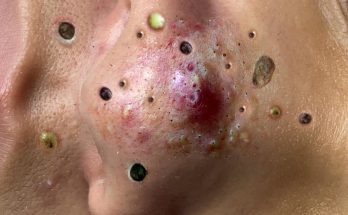
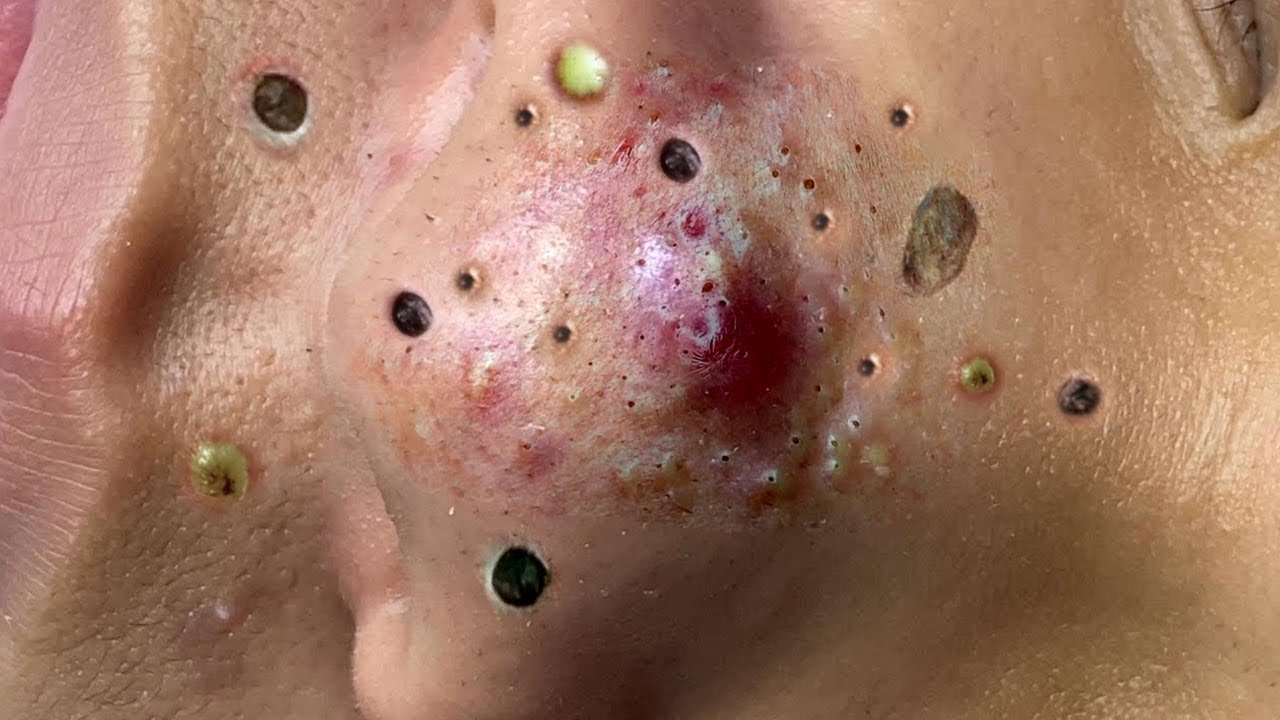
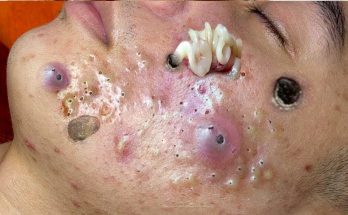

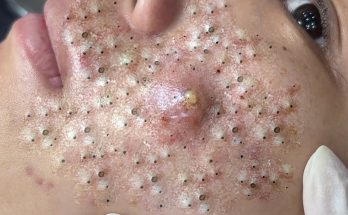

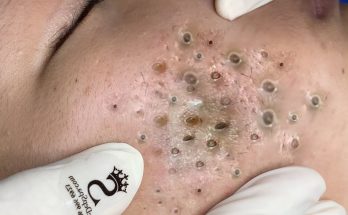

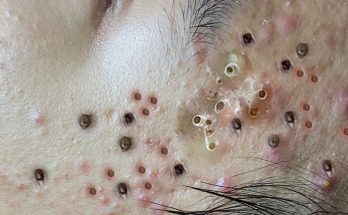

:max_bytes(150000):strip_icc():format(webp)/Health-GettyImages-1307601679-1f528f3bb15c44da9ef336fd6c34cca4.jpg)




